The lectures and videos below are from an introduction to networking module i developed a few years ago. The key design focus of this material was to get hands-on networking back into the classroom i.e. move aways from bookwork, theory and get back to practical networking. The aim is to teach the skills and knowledge you would actually need in the realworld, a strange concept :).
Overview.
Lecture 1 - Introduction.
Lecture 2a - Application layer.
Lecture 2b - Application layer.
Lecture 3a - Transport layer.
Lecture 3b - Transport layer.
Lecture 4a - Network layer.
Lecture 4b - Network layer.
Lecture 5 - Data link layer.
Lecture 6 - Physical layer.
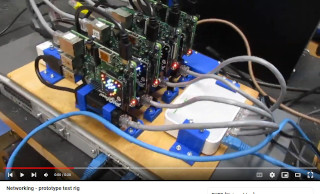
Everything has a beginning, prototype test rig: 4 x Pi (hosts / routers), 1 x router + 1 x switch. Apologies for the noise i was using an old rack mounted switch to connect to the network, however, it does give that authentic server room experience :). Videos: (Link)
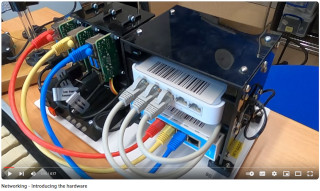
A quick overview of the hardware we will be using in the lab. Also to add value, i wanted a DIY element i.e. students could if they wised follow the build guides and construct their own Raspberry Pi based networks / systems for home use. Videos: (Link)
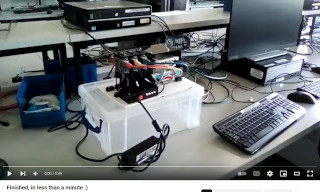
A word to the wise don't write a Raspberry Pi image to your laptop's SSD, thats a very, very bad thing to do :(. This small mistake has taken a little time to recover from, but i have finally finished setting up the lab for the next semester, that is: 70 desks x 3 Raspberry Pi = 210 SDcards cloned and routers configured, all in less than a minute :). Videos: (Link)
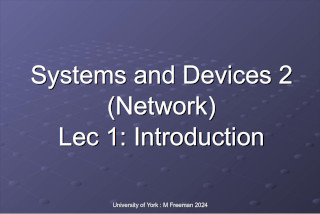
Introduction to lecture series, what the module is about, what we will be doing and a quick introduction to networking and everything else :). Video: (Link). Slides: (Link).
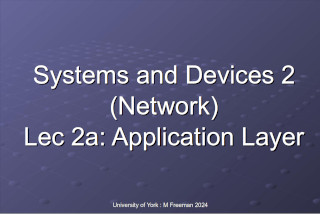
A brief look at the journey from ARPANET to the Internet. How do hosts communicate, IP and Ports. What is a protocol and what protocols can be used to transfer stuff : HTTP, FTP and SMTP. Video: (Link). Slides: (Link).
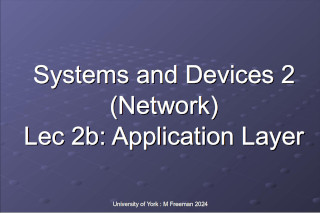
A quick look at some of the house keeping protocols that live in the application layer : DNS, DHCP and NTP. Video: (Link). Slides: (Link).
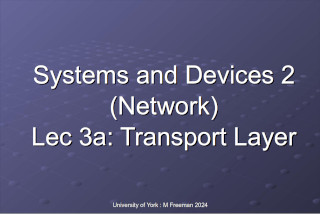
Moving down our protocol stack, down to the transport layer, stopping to consider what we need to do to send packets bewteen two machines, looking at : IPoAC, UDP, Checksums. Video: (Link). Slides: (Link).
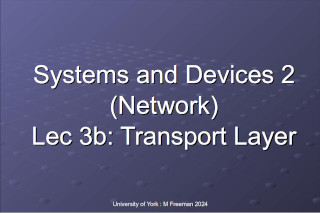
Still in the transport layer, but moving away from those unreliable pigeons, now looking at our reliabile communications protocol : TCP and its SEQ, ACK, MSS. Video: (Link). Slides: (Link).

TCP is a BIG protocol, a complex protocol, a difficult protocol to master, so it needs a part-2. In this video we will be looking a flow-control and congestion-control. Video: (Link). Slides: (Link).
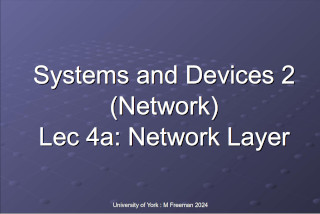
IPv4, IPv6, NAT, Static routes . Video: (Link). Slides: (Link).

IPv4, IPv6, NAT, Static routes . Video: (Link). Slides: (Link).
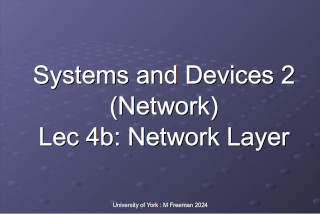
Fragmentation, TTL, RIPv1, RIPv2. Video: (Link). Slides: (Link).
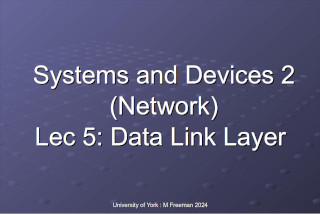
Ethernet, ARP, MAC, ICMP. Video: (Link). Slides: (Link).
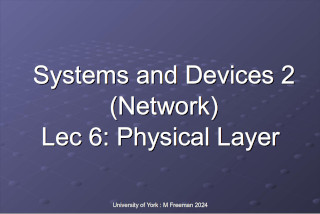
Bits, Manchester, MLT, 4B5B and CAT cables. Video: (Link). Slides: (Link).

This work is licensed under a Creative Commons Attribution-NonCommercial-NoDerivatives 4.0 International License.
Contact email: mike@simplecpudesign.com